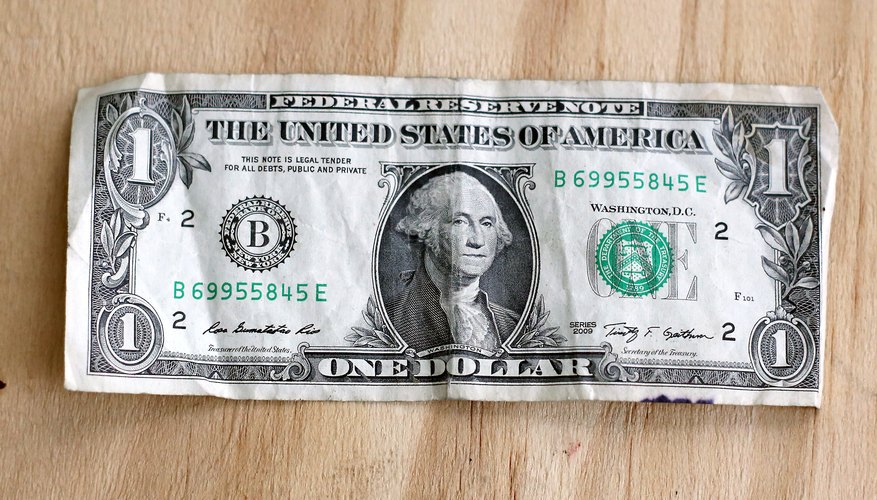How Do You Know If Money Is Real


You know where this is going. Senfe wired the money to a Wells Fargo bank account here in the Southland. Her husband hasn’t come back. And now Senfe is hitting a brick wall in being reimbursed. The most legitimate and reliable way to tell if gold is real is with a reputable jewelry appraisal. Of course, you should expect to pay a fee for the appraisal, but it’ll save you time and worry because you’ll have a solid answer on whether or not your gold is real or fake.
When we track our net worth, one of the line items is the value of our home. We keep it as an offset against the mortgage, otherwise our net worth would be lopsided.
One of the challenges with home values is that it's difficult to mark them to the market. “Mark to market” just means assigning a value based on what the market has determined is the true price. It's easy when you have a public company's stock – it gets traded all the time every day on the public markets. If you want to know the price of Apple stock, look up APPL.
Homes are not as simple. There are comparables, but those aren't truly accurate. Even if you live in a condo with identical units, there is typically enough variance that it's not accurate. Is a 2 bedroom, 1 bathroom on the first floor the same as the same bed/bath on the top floor? How much is the top floor worth? Too much variance
My solution to our tracking is to set the home value at the purchase price and leave it at that forever. I like it because it's simple and I don't care about home value when it comes to our net worth (sadly, this is quite uncommon since most of American's net worth is locked in home equity).
If you aren't too keen on that, what are some other ways?
Many people who work with cash on a regular basis develop a feel for the difference between legitimate and counterfeit money. Others may receive an occasional bill in change that simply doesn't feel right. There are a number of ways to tell if money is counterfeit, but it helps to recognize the safeguards and counter-measures built into legitimate paper currency as well. Even the most sophisticated counterfeiter is likely to miss something.
Real money is generally printed on special paper with a high amount of cotton fiber. This allows paper currency to be folded several thousand times without tearing. In many cases, counterfeiters use a cheaper form of bond paper that is not nearly as durable. If the paper is not treated properly, the ink will bleed into the fibers and create blurred or blotchy images. A visual inspection between a suspicious bill and a known bill should reveal any obvious printing errors or paper quality differences.
How Do You Know If The Money Is Real
Another way to tell if money is counterfeit is to look for special security measures built into real paper currency. Holding the bill up to a light source should reveal a watermark, essentially a shadow image depicted in the center. This watermark is created during the paper making process and cannot be duplicated by a photocopier. The lack of a discernible watermark should be an indication the money is fake.
In US currency, there should also be an embedded security strip that denotes the denomination of the bill. This is another anti-counterfeiting measure added to the bill during the printing process and cannot be seen in reflective light. By holding the bill up to a light source, you should be able to see and read the strip along one side. This process of implanting a plastic foil strip into the actual paper took almost a decade to perfect, so counterfeiters would have a very difficult time duplicating it without the specialized equipment.

Many places, such as grocery stores, retail outlets, and restaurants, that deal with large amounts of cash have other ways to tell if money is counterfeit. A pen loaded with a special reactive ink can be swiped across a suspicious bill to determine if it is real or fake. If a visible mark appears, the money is considered legitimate. If the mark remains invisible, this indicates the paper has not been treated with the proper chemicals and is most likely counterfeit. These pens can be purchased at many office supply stores for personal use as well.
Real US currency also contains special inks that change color when viewed at different angles. If a suspected bill's government seal and other denominational indicators do not change from black to green when viewed at an angle, the bill may very well be counterfeit. Even the most sophisticated photocopiers or offset printers can have trouble reproducing extremely fine print, so an examination of a bill under a magnifying glass should reveal small letters hidden within the background scrolls and images. If these microscopic letters are missing or unreadable, the bill is most likely counterfeit.
How Do You Check To See If Money Is Real
There are other ways to tell if a particular bill is counterfeit or not, but it may simply be safer to turn suspicious money over to law enforcement officers or bank officials for further investigation. In general, counterfeiters tend to concentrate their efforts on larger denominations, such as $10s, $20s, $50s, or $100s in US currency. Small purchases made with exceptionally large currencies may be an effort to launder a counterfeit bill by receiving legitimate change, for example. This is a red flag for many retailers, so don't be surprised if your own larger bills are examined very closely when making cash purchases.